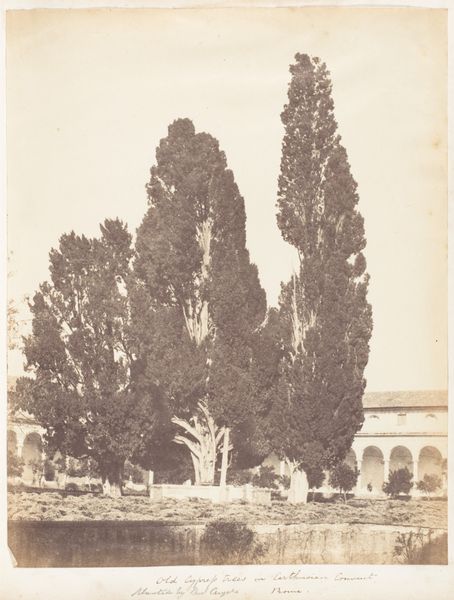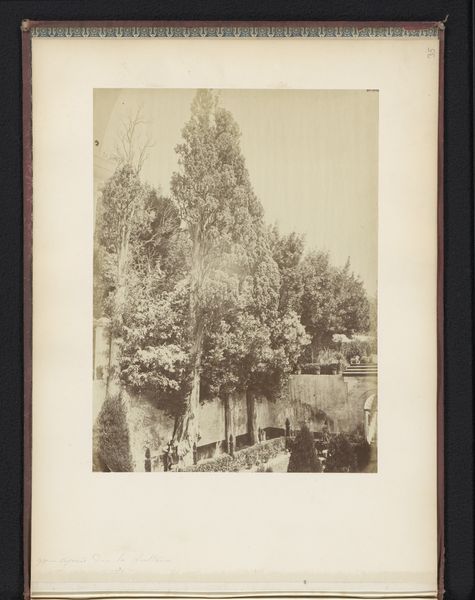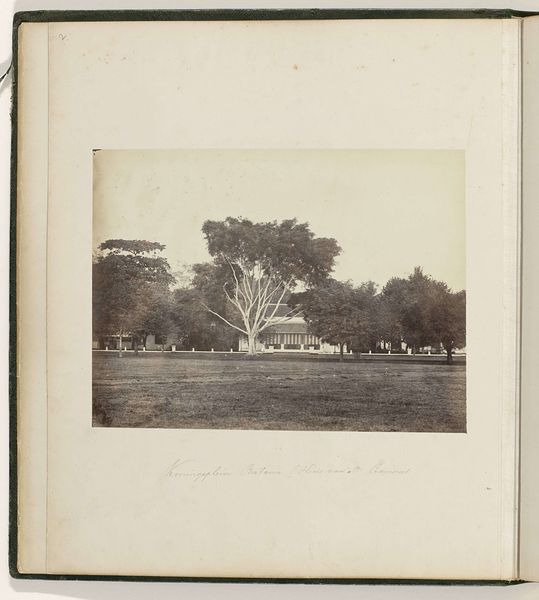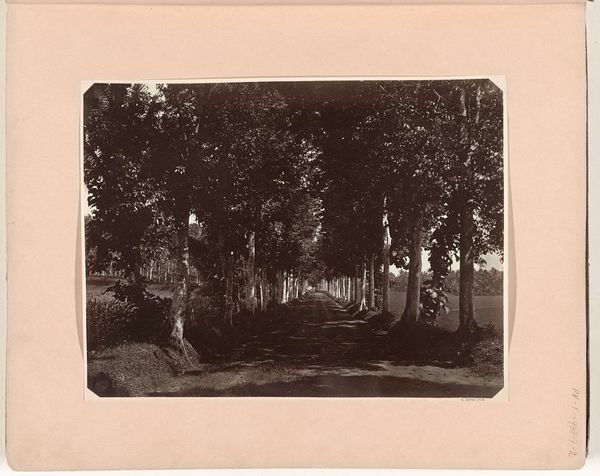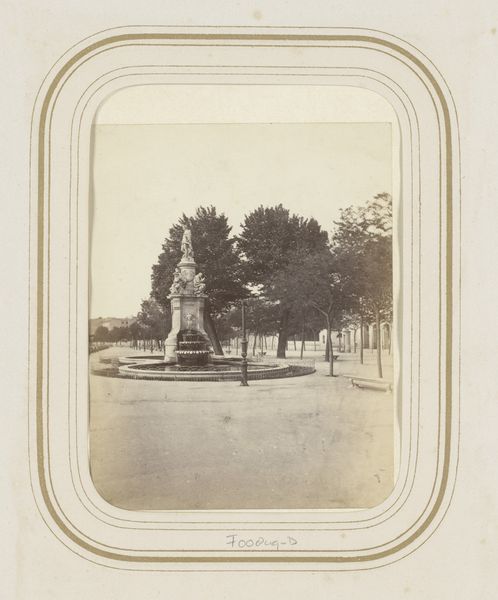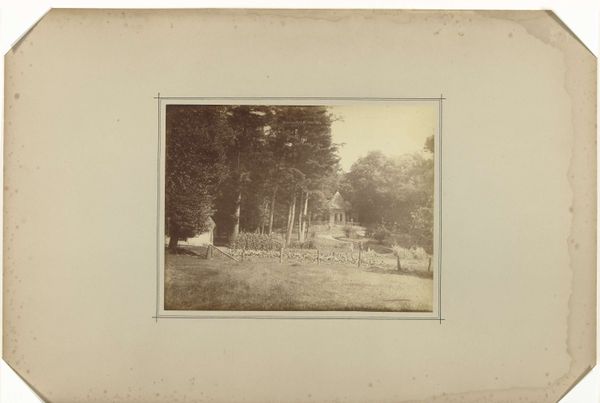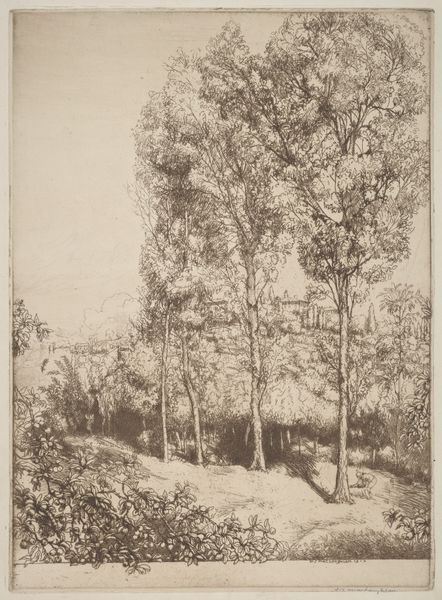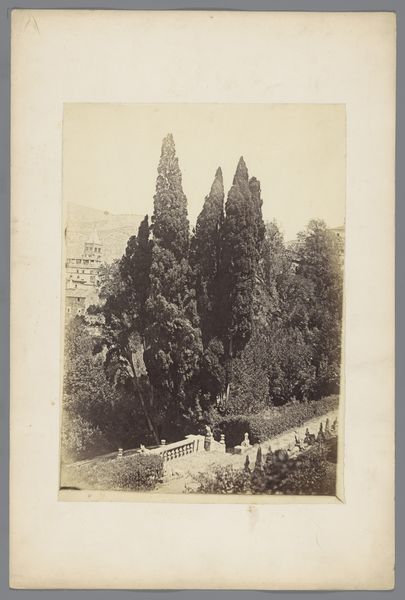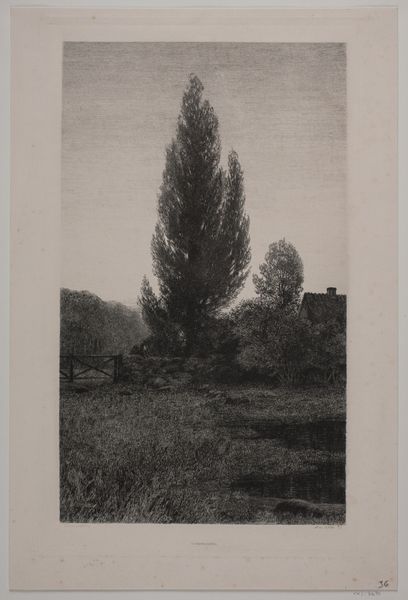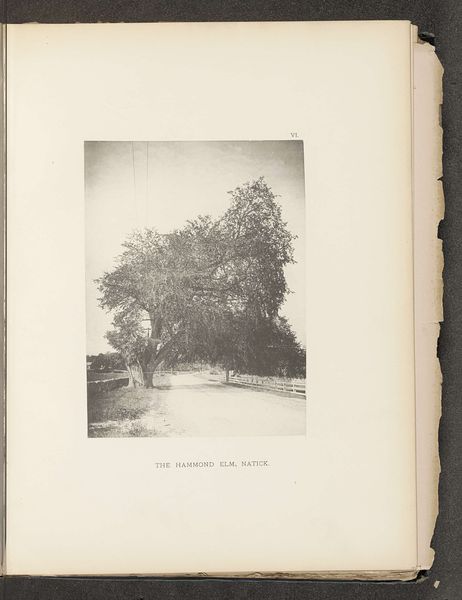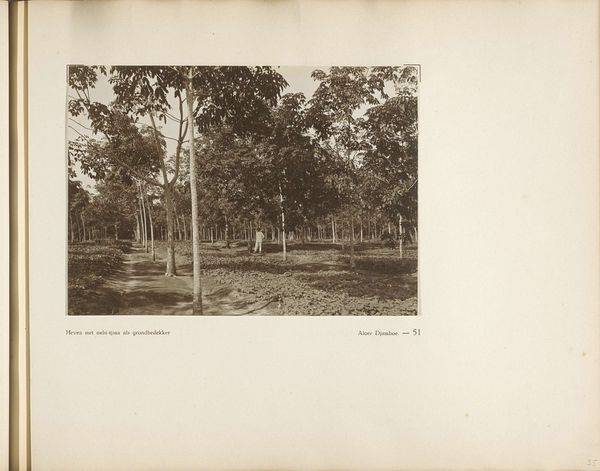
Dimensions: height 482 cm, width 357 cm
Copyright: Rijks Museum: Open Domain
Editor: How melancholy! Despite the sunlight, I get such a sense of somber monumentality. Curator: Well, let’s delve into this captivating landscape. This is “Boomstudie, te Rome,” or “Tree Study, in Rome,” captured between 1857 and 1875 by Gustave Eugène Chauffourier. Editor: Yes, those towering cypress trees reaching heavenward. There’s something undeniably gothic about them. Is this a particular photographic technique? It's rather sepulchral and shadowy in tonal range. Curator: He uses the wet collodion process here. Notice how it allows for incredible detail – you can almost trace every needle on those evergreens, yet observe the very minimal depth of field. It pulls the eye up. Editor: This process would have required considerable preparation, wouldn't it? I can imagine Chauffourier lugging all the chemicals, glass plates and bulky equipment across the Roman landscape. Considering the time-intensive development of each image in situ it surely indicates Chauffourier was a very privileged man. It invites reflection on who has historically been allowed access to creative industries, does it not? Curator: Absolutely. And that inherent constraint contributes to the image's profound sense of composition and balance. It's all tightly controlled to yield the tonal values which contribute to this image's pensive qualities. Editor: I am drawn to think about how our modern modes of image creation encourage quick proliferation. Today's social-media driven content, a very different way of interpreting a location as subject. Do you think Chauffourier, if living now, would use digital media as much as wet plate? Curator: That's fascinating speculation, but in this image he gives us more than an objective recording of cypress trees. We perceive the deliberate and thoughtful manipulation of light and shadow in his practice. Editor: I will continue to wonder if he, or we, were simply trapped in a specific technology, economic system and associated visual culture of that historical moment, which may feel so fundamentally different now. Curator: Fair point. Ultimately, “Tree Study, in Rome” stands as an intriguing confluence of technical mastery and artistic intention. Editor: A convergence that prompts consideration of materials, labour, and modes of artistic accessibility and engagement over time. Thank you.
Comments
No comments
Be the first to comment and join the conversation on the ultimate creative platform.
